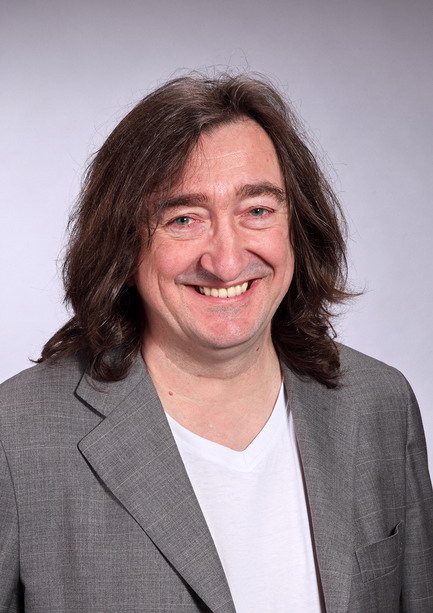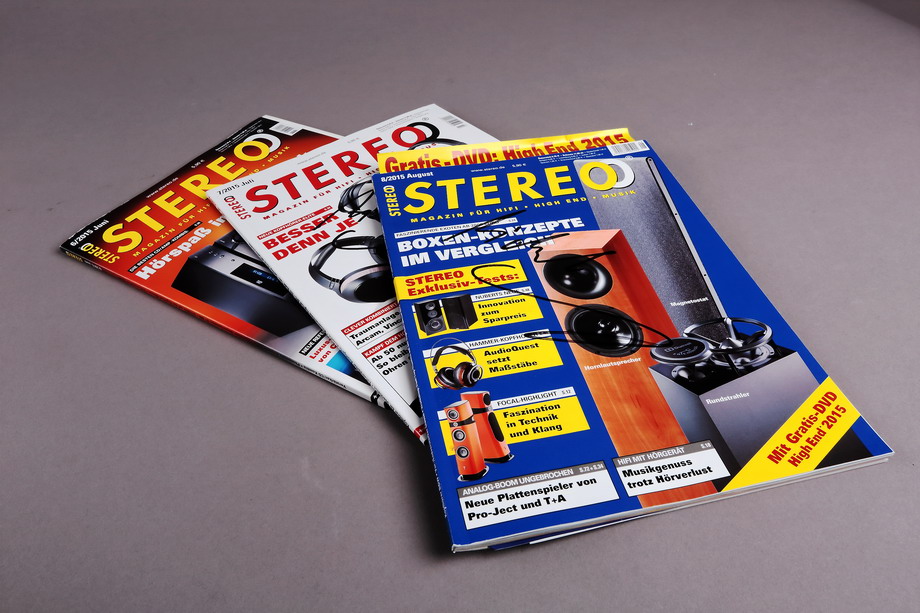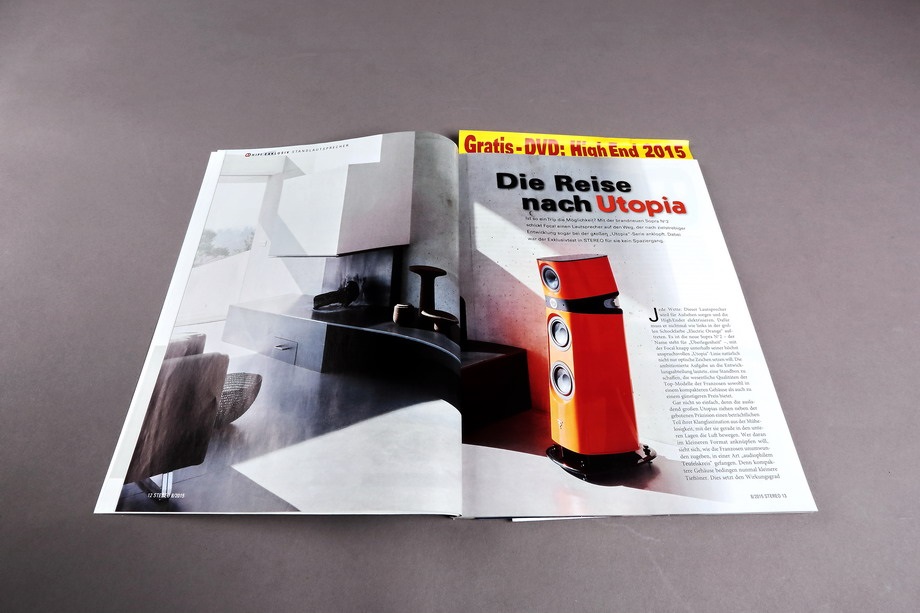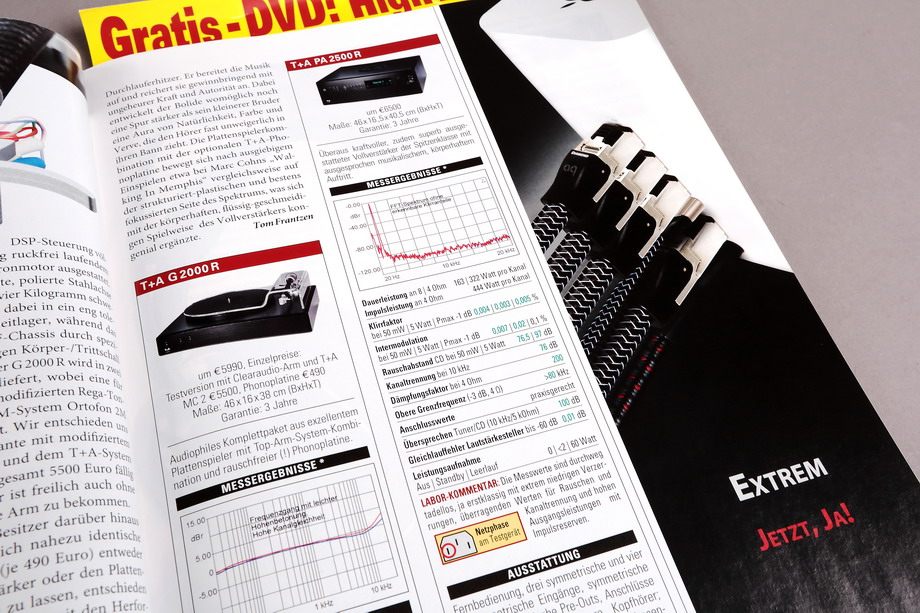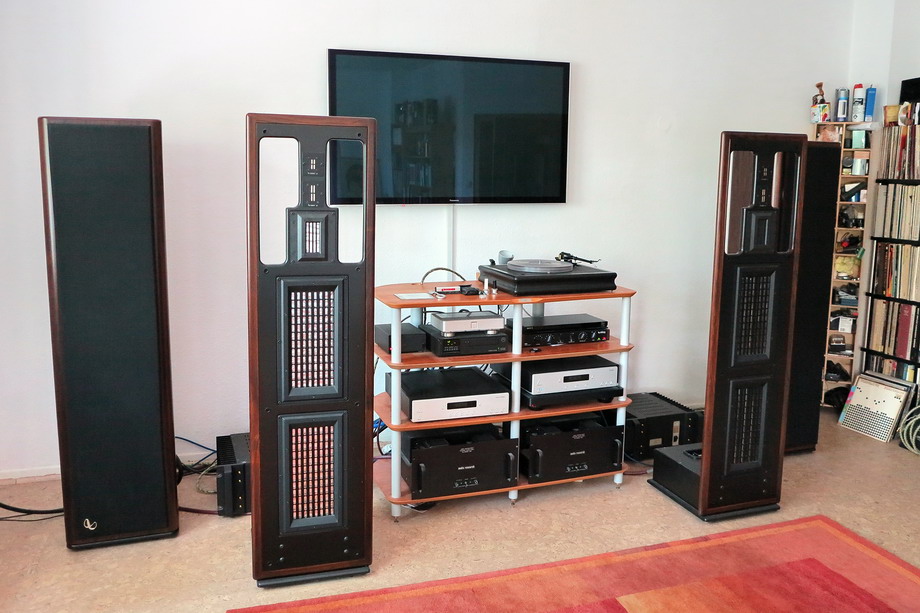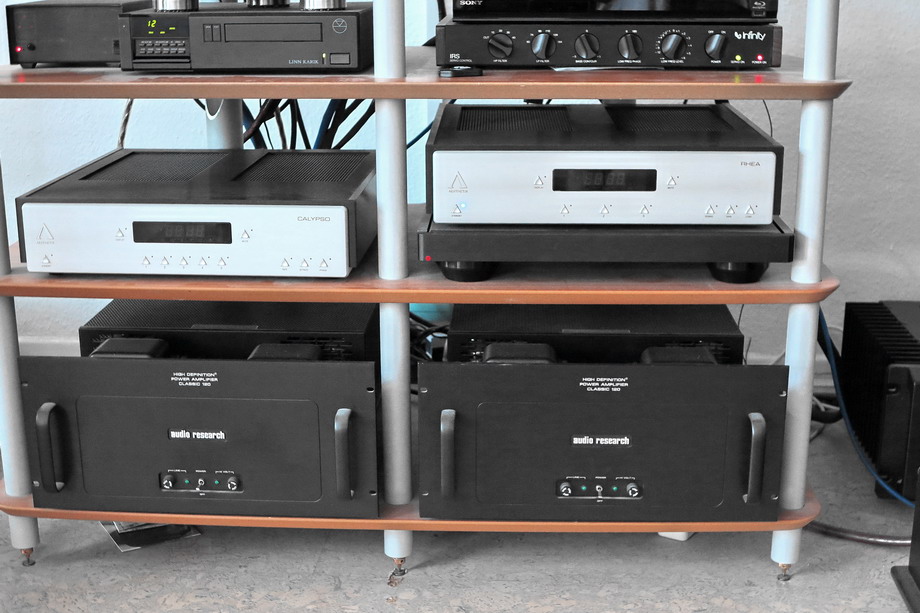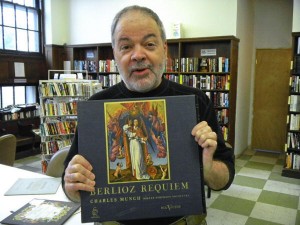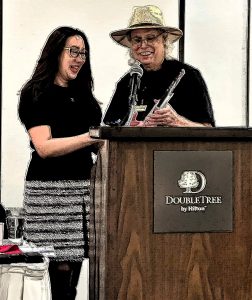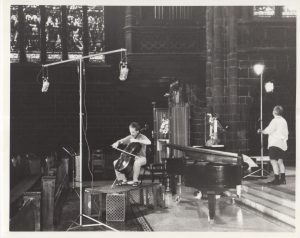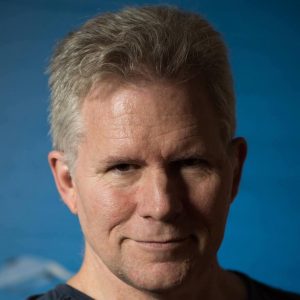The Editors Series
Numbers show how much the world of hobbyist magazines has changed. In a book entitled EISA. Looking Back, Moving Forward published in 2007, which was to add splendor to the 25th anniversary of the EISA reward, we read that the German Stereo magazine had an impressive circulation of 70,000 at that time (according to the then Editor-in-Chief, Matthias Böde). In the interview that you are reading now, the present boss, Michael Lang, talks about 17,000 copies (controlled circulation). Even if he adds that it is assumed that each copy is read by two readers, the difference is enormous. However, this is what the world of the second decade of the 21st century looks like and the number of issued Stereo copies makes it reach a top position among other printed audio magazines.
As we read both in the abovementioned book and on the official EISA website, Stereo is the oldest German hi-fi magazine, established in 1973. Every year, 12 issues and usually two special editions are published (Phono, Digital, Exclusive HighEnd), as well as the HiFi Catalogue (Jahrbuch) with a list of all tested and still available products.
Stereo has always focused on "listening to music from a pure audiophile's perspective, even if sometimes it has dealt with surround sound and home cinema systems" (read more HERE). It is one of three German magazines with the highest circulation, beside Audio and Stereopla. We talk about equipment, music and audiophile press with Michael Lang, the managing director of the magazine.
WOJCIECH PACUŁA: Please tell us something about yourself.
MICHAEL LANG: I'm 54 years old and I was born in the wonderful city of Cologne where I have been living all my life. I've never left the city for more than 5 weeks and would only do it if was forced to. It is similar with my wife—we have been married for 23 years now and plan to go on until we are old and grey. We have 2 wonderful daughters. I've been a Hi-fi maniac since I got my first open reel, the Grundig TK20 at the age of 8. So, the open reel was the start of my career in the world of Hi-fi, indeed. I used to spend hours at the radio, first with a microphone, later on with a so-called "Diode Cable"—a 3-pin mono DIN-cable (later used by the Naim and Linn companies) to make my own records because I couldn't afford to buy records.
The next step was my first stereo recorder—the Philips 4414. I really loved it because it hat separate buttons for every function and not a "Multi-knob" like most other tape recorders in that price range. Oh Lord, those were great times!
WOJCIECH PACUŁA: How did you start working for Stereo?
MICHAEL LANG: I started working in the field of professional Hi-fi in the mid of my twenties as a retailer in Cologne. I was impressed by Rogers and Cabasse speakers, and then by the early Kappa, Quad and Pieg models.
Turntables were not valued too much at that time, but we had a lot of fun in demonstrating what the Thorens 520 with the Grado Signature tonearm (I still have one) and the Grado Pickup cartridge could do, compared to early CD-players. Our analog crown at that time was the Audiomeca J1—still a wonderful turntable.
It was a time when people did not expect to hear any difference between amplifiers, until they compared an Arcam Alpha with a Kenwood or Harman. Such experience would turn their world upside down...
There came a day when I had to ask myself what I would like to do with my life as a young father and husband. I gave up thinking about my own shop when I heard that "Stereo" was looking for someone to earn money for the magazine by selling its advertising space. To do this in a serious way, they needed a person who knew what dealers, distributors and manufacturers expected, and could offer them the right solutions.
I did not intend to do that for more than two years or so, but I was successful and enjoyed doing this job so much that I have stayed in the company for nearly 17 years now. 5 years ago I got the chance to try something new and I became part of the editorial team—a dream of my youth came true! So—here I am! There's nothing I could do better than Hi-fi and nothing I'd like to do more. I love being part of this crazy family.
WOJCIECH PACUŁA: What do you like in audio and what do you dislike?
MICHAEL LANG: I like to meet all these obsessed people looking for a little bit of musical truth—people who can talk the whole evening about a tiny detail that changes everything - at least in their opinion. I guess we need those explorers who have an idea of sound and not only of circuits and technical details or, even worse, only of product prices.
I really do dislike products that cost a fortune but are made in a silly way and sound poor. I have often criticized them in recent years in articles that I have written after attending audio exhibitions. Yes, I know that some of these high-tech solutions will be used later on in cheaper and more affordable products—that's ok with me. But the majority of extremely expensive products are uninspiring for me—they are built only because there's a market niche for them. I really do believe that such an attitude makes the Hi-fi or high-end hobby less attractive for those who love music and want what is best, but see that there is no way for them to save enough money to come close to those products.
WOJCIECH PACUŁA: How many people work for Stereo magazine?
MICHAEL LANG: Altogether there are 13 people: 6 of them working as editors, a measuring engineer, a photographer, a secretary, a layouter, a storage employee, a graphic designer and a person who deals with advertising.
WOJCIECH PACUŁA: How many people read your magazine?
MICHAEL LANG: On average, we sell 17,000 copies of each issue and each is read by at least two Hi-fi fans. We are controlled by IVW [a German abbreviation for Informationsgemeinschaft zur Feststellung der Verbreitung von Werbeträgern, i.e. Information Community for the Assessment of the Circulation of Media—Editor's note], so everything we sell is open to the public and official.
WOJCIECH PACUŁA: What is your reviews policy?
MICHAEL LANG: We want to find out about the character of the reviewed device and describe the technical aspects of its construction, as well as craftsmanship and sound—in a specific system. We have dedicated two listening rooms of more than 40 m2 and 20 m2 for this purpose.
A test consists in comparing the given product with a similar one within the same price range, as well as with our reference products. We spend as much time on listening as it is necessary before we express our opinion. Our verdict is given on a percentage scale with a maximum of 100% (where 100% is the highest, absolute quality), as well as with regard to the price/quality ratio (with relation to sound quality), craftsmanship and material quality, and, to some extent, functionality. The verdict here is given using one to five stars (poor to outstanding) We do not always want to write the first review of a given device, but we always want to be the best when it comes to reviewing new products. J
WOJCIECH PACUŁA: How does the German audio market differ from the British audio market, for example?
MICHAEL LANG: I guess there is no bigger audio market in Europe, perhaps even worldwide, with so many products. For nearly every company, Germany is the key market. Producers assume that if they can make it there, everything is possible for them.
That makes it hard for customers to make the right choices. It is also difficult for dealers—most consumers want a wide range of choices, and that requires room and money. Distributors and manufacturers also have a difficult job to do, because there are so many dealers, some selling with only little margin. It is hard for everyone to earn good money on this market when you can only sell a little amount of any product. Nevertheless, there are many Hi-fi and high-end dealers in Germany who have "classic" stores and do their main business there, not online.
WOJCIECH PACUŁA: What is unique about your market?
MICHAEL LANG: Again, dealers. You will find at least one or two dealers in any middle-sized town of 50,000 to 100,000 residents—more than anywhere else, as far as I know. So, tough business is guaranteed and every dealer has to find their own market niche. And, of course, each dealer has a "big neighbor"—Saturn or Media Markt—that grabs a lot of potential customers.
WOJCIECH PACUŁA: What is the advantage and what is the greatest weakness of web-based magazines?
MICHAEL LANG: The big advantage is that you can write as much as you like about anything, you don't have to meet any deadlines, you publish an article when it is ready. There is also no problem with volume and a restricted amount of pages.
The big disadvantage is that most online magazines do so—they blow up every stupid thing just to keep the reader longer on their page, which helps them earn more money. The information that a reader can find there is often poor and the customer usually wastes their time online reading it—everybody who is familiar with surfing the Internet knows how much time is wasted on looking for information...
WOJCIECH PACUŁA: How about printed magazines?
MICHAEL LANG: Our disadvantage is that we are a little bit slow in reporting information and that we have an imposed structure that makes a lot of planning and discipline necessary.
However, the advantages of print are enormous: we have time to check any product thoroughly until we learn everything about it; every single article is controlled by a proofreader, and we can also prepare every magazine cover and every single picture in a report or review with passion.
We measure the products that we test in our own laboratory. Looking for perfection, we sometimes devote a whole day to make the front page cover look exactly the way we want it to look. And, of course, there is an obvious difference in perception between looking at a sheet of paper in your hands and a screen in front of you.
WOJCIECH PACUŁA: Do you think that hi-res files are the future of high-end audio?
MICHAEL LANG: They will probably be the future for maniacs who are a small target group of consumers. I'm sure these files will be accompanied by vinyl. And, as data storage is getting cheaper and data transfer is faster than ever, this will be possible and affordable for every music lover.
However, I'm not quite sure if this will be ideal for musicians. The case of Spotify and Tidal shows that this solution is, in many respects, interesting for consumers, but there is a big question which still remains unanswered: how can the majority of musicians economically survive in this situation?
WOJCIECH PACUŁA: How about vinyl and CD?
MICHAEL LANG: Vinyl will live on. This is the only system that people will be able to use in a hundred years. It is because every single step from production to reproduction is quite simple and easy to understand. So, if machines that we are currently using refuse to work on, there will always be someone to repair or to rebuild them. The CD has had its time and it will stay with us for a while, maybe a decade, and then it will remain a format that will be talked about as a system that had been accepted by many, but loved by few. It will disappear slowly with time.
WOJCIECH PACUŁA: What is your recipe for assembling a good audio system?
MICHAEL LANG: First of all: take your time! Then I would start choosing speakers, because it is where you have to compromise the most. The compromises are related to your room, the location of the speakers, their look and your wife. When this is done, go to a dealer you trust and let him work for you: bring a turntable, an amp, a CD player or a streaming device, a rack, cables, etc.—until the sound blows you off your feet. And then buy everything right there and don't curse about the price—money is secondary to long-lasting pleasure. The price (per day) of a system which will give you satisfaction for a decade or more is tiny.
WOJCIECH PACUŁA: Please tell us about 10 albums that High Fidelity readers should buy.
1. JACK WHITE: Blunderbuss
It is the definition of today's rock music. Powerful, fancy and with a writer/singer/guitar player who knows his idols and their music very well.
2. STEVEN WILSON, Hand. Cannot. Erase.
It is the best album of the year 2015 so far. It is intelligent both when it comes to music and lyrics—I haven't heard a similar concept album for many years. It's an art which I used to think was lost forever.
3. THE ROLLING STONES, Sticky Fingers
Its remastered version has just been re-issued. It is a must-have not only for Rolling Stones fans, a record full of drugs and blues. It is indispensable and very close to perfection.
4. PATTI SMITH, Horses
The record is 40 years old—no dust, no rust. And the artist still performs live on stage, and is still as angry as before.
5. BEATLES, Abbey Road
Are you in a bad mood? Go and listen to "Here comes the sun". If that doesn't work, check if you're still alive.
6. DEEP PURPLE, Made in Japan
Do you know any better live album? If yes, I'm willing to listen.
7. Di MEOLA, LUCIA, McLAUGHLIN, Friday Night in San Francisco
Yes, I know, most of us have heard it too many times. But after a few years of ignoring it, putting it back on the turntable always feels like coming home.
8. THE WAR ON DRUGS, Lost in a dream
It is an idiosyncratic, intensive, unique album. It takes serious listening, usually several times—but it's worth it.
9. ERIC CLAPTON, Crossroads
If you want to understand white blues, listen to this album. By listening to it you will learn what excellent musicians can do together when the band is more than just a couple of guys.
10. RODRIGO, Concierto de Aranjuez, Academy of St. Martin-in-the-fields
It's a record which makes a rocker sensitive to classical music. It is smooth, dynamic and passionate. Come on, rock fans—give it a listen!
WOJCIECH PACUŁA: Describe your audio system, please.
- Speakers: Infinity IRS Beta, with an active crossover, restored and modified—old, big, requiring good amplifiers
- Amplifiers: bass amps: 2 x Threshold SA 11 (mono) Class A 150 W/8 Ω, Mid/High Amps: Audio Research Classic 120 (mono, tubes)—the favorite amps of Arnie Nudell who has developed the Beta speakers, preamp: Aesthetix Calypso Signature (tube design).
- Phono amp: Aesthetix Rhea Signature (tube design)—tubes even in the first stage of amplification. It produces a little bit more noise than its solid state colleagues, but the color, smell and speed of its sound remain unmatched. Gain and impedance can be changed using a remote control; there are three independent inputs; a special version with 3 x RCA and 2 x XLR inputs, and a double RCA and XLR output. Some aspects of the Aesthetix Calypso Signature sound: excellent dynamics and a little warmth on the one hand, and an incredible set of XLR and RCA connections—ins and outs, each doubled—on the other hand. It is perfect for my system with the Classic 120 amplifiers, directly connected via XLR and via RCA using the active speaker crossover.
- Turntable: Voyd Reference with an independent subchassis and three motors. It has definitely been created "by ear", not on a drawing board.
- Cartridge: Benz Micro LPS
- CD player: Linn Karik—reliable, still well-sounding, lacking detail and punch a little bit, but as I mostly listen to LPs, it's not that important to me
- D/A converter: Exogal Comet—a real surprise offering an excellent quality/price ratio, created by former Wadia boys. Made in the USA.
- Interconnects and speaker cables: Cardas Golden Cross—old, but offering the kind of tonality that I prefer in my system.
- Power cables: NBS—ok, this is the freaky thing in my system. The moment to laugh at me.
- Power strip: Vibex. A big system needs a big power strip. It is durable and well-made, with enough connections for all that equipment.
- Filters: none, though I have tried a lot. The longer I listened to them, the sooner I wanted to get rid of them.
- Rack: Audio Magic—a compromise between music and living.
"THE EDITORS" series has included:
- SRIDHAR VOOTLA, Hifitoday.com, INDIA, journalist, see HERE
- STUART SMITH, HIFI PIG Magazin", FRANCE (BRITTANY), see HERE
- SCOT HULL, Part-Time Audiophile, USA, editor-in-chief, see HERE
- ART DUDLEY, Stereophile, USA, editor-at-large, see HERE
- Helmut Hack, Image Hi-Fi, Germany, managing editor, see HERE
- DIRK SOMMER, HiFiStatement.net, Germany, chief editor, see HERE
- MARJA & HENK, 6moons.com, Switzerland, journalists, see HERE
- CHRIS CONNAKER, Computer Audiophile, founder/chief editor, see HERE
- MATEJ ISAK, Mono & Stereo, chief editor/owner, Slovenia/Austria; see HERE
- Dr. DAVID W. ROBINSON, Positive Feedback, USA, chief editor/co-owner; see HERE
- JEFF DORGAY, TONEAudio, USA, publisher; see HERE
- CAI BROCKMANN, FIDELITY, Germany, chief editor; see HERE
- STEVEN R. ROCHLIN, Enjoy the Music.com, USA, chief editor; see HERE
- STEPHEN MEJIAS, Stereophile, USA, assistant editor; see HERE
- MARTIN COLLOMS, HIFICRITIC, Great Britain, publisher and editor; see HERE
- KEN KESSLER, Hi-Fi News & Record Review, Great Britain, senior contributing editor; see HERE
- MICHAEL FREMER, Stereophile, USA, senior contributing editor; see HERE
- SRAJAN EBAEN, 6moons.com, Switzerland, chief editor; see HERE
www.stereo.de http://www.stereo.de
GERMANY
Interviewer: Wojciech Pacuła
Pictures: Michael Lang | Wojciech Pacuła




